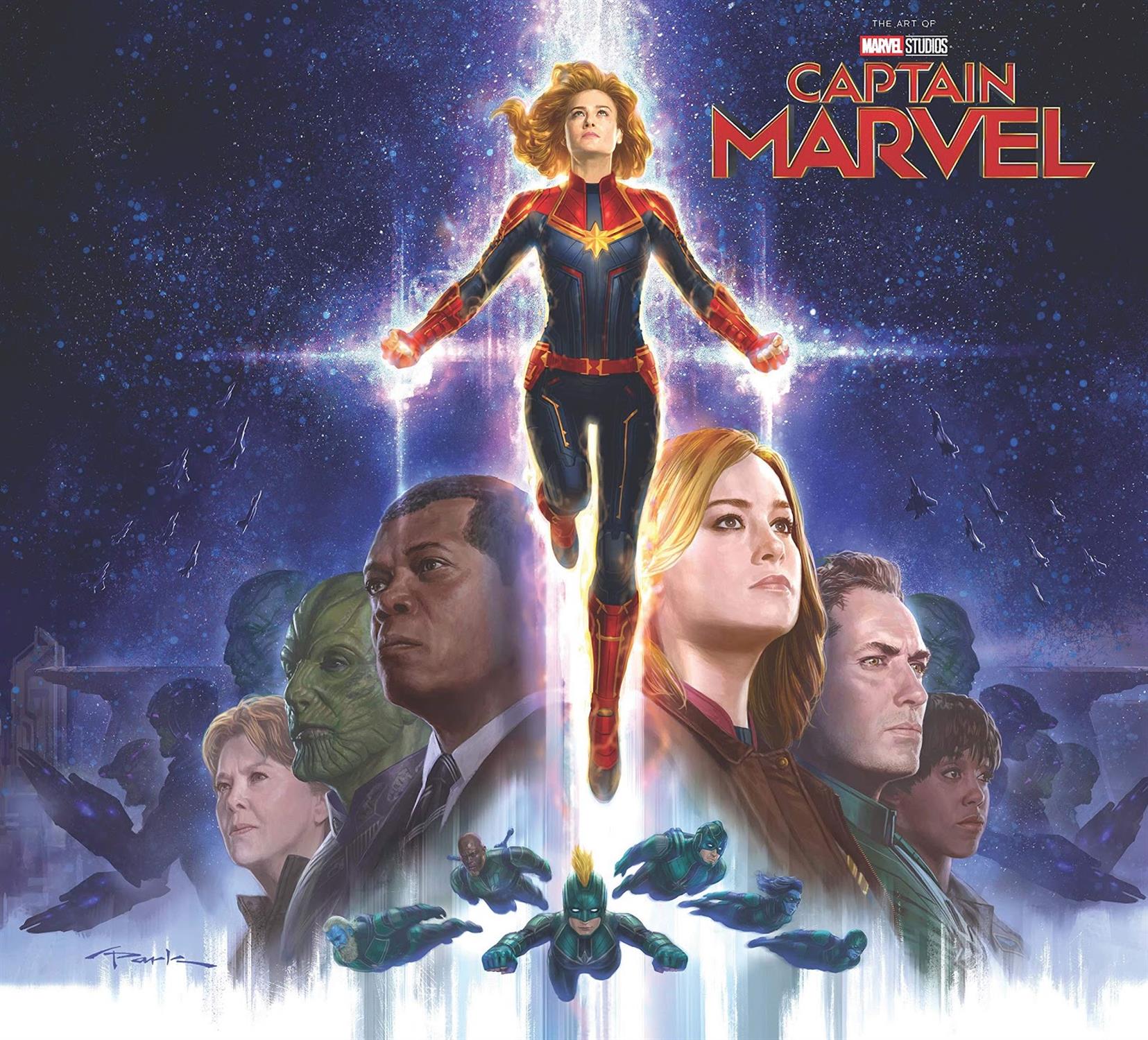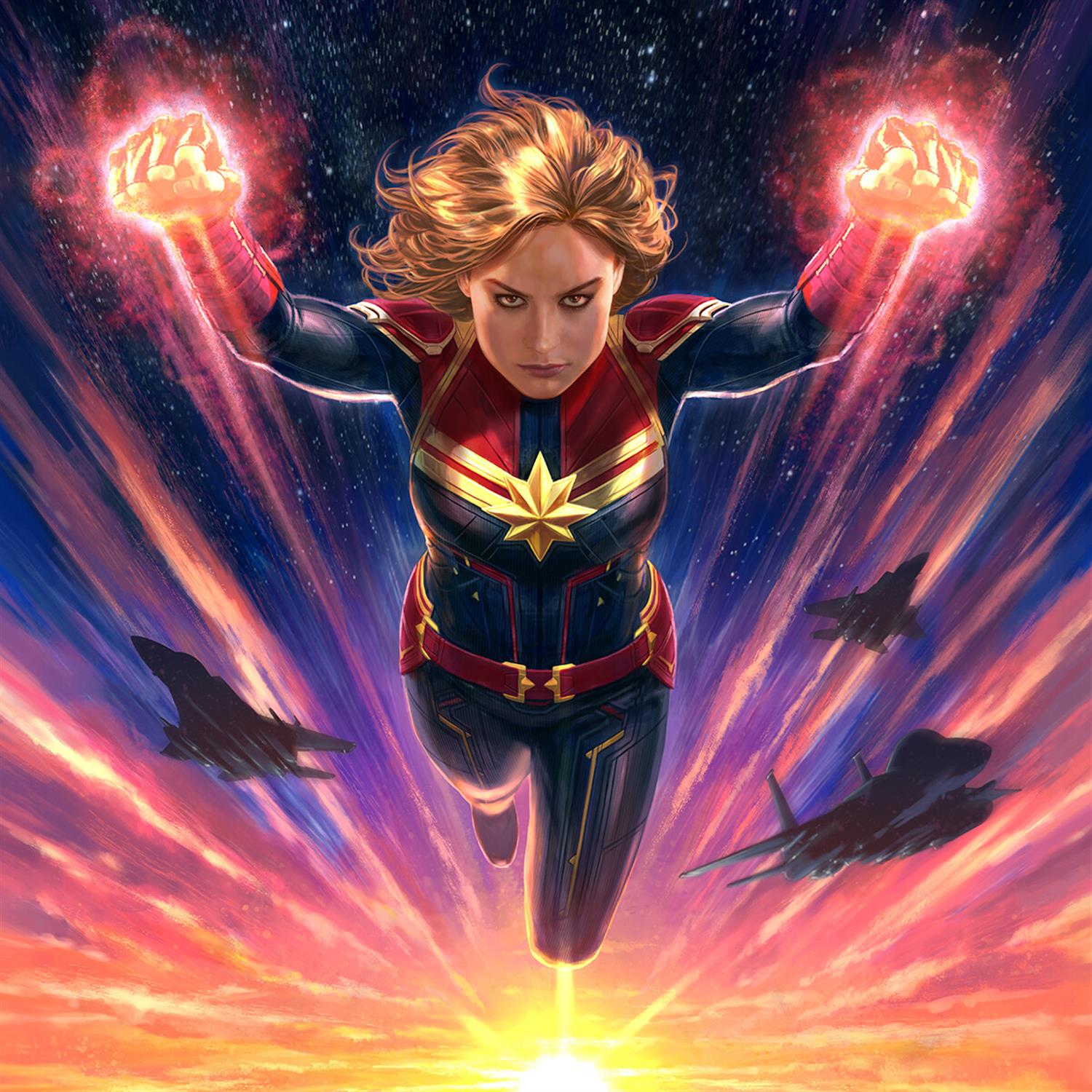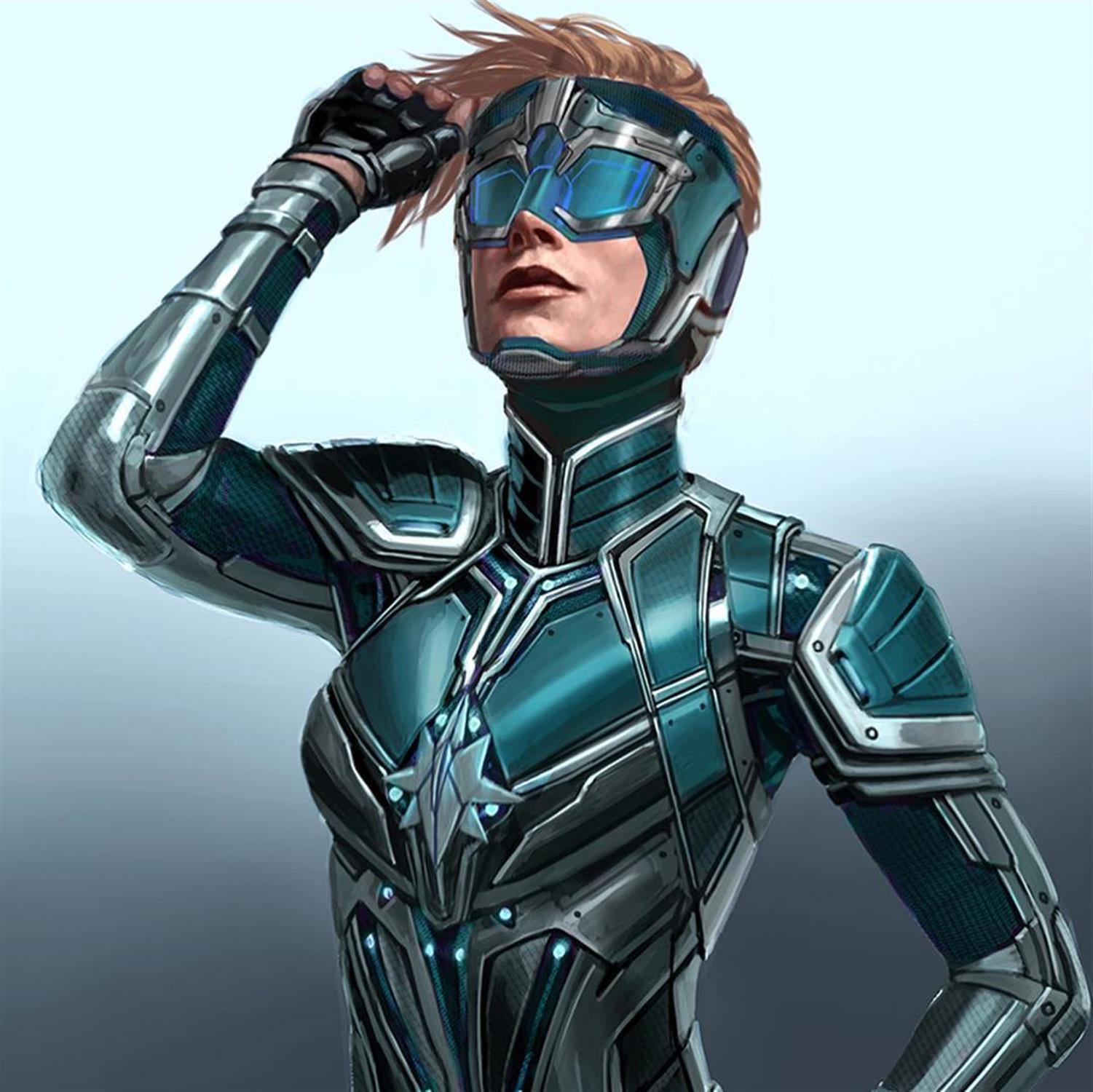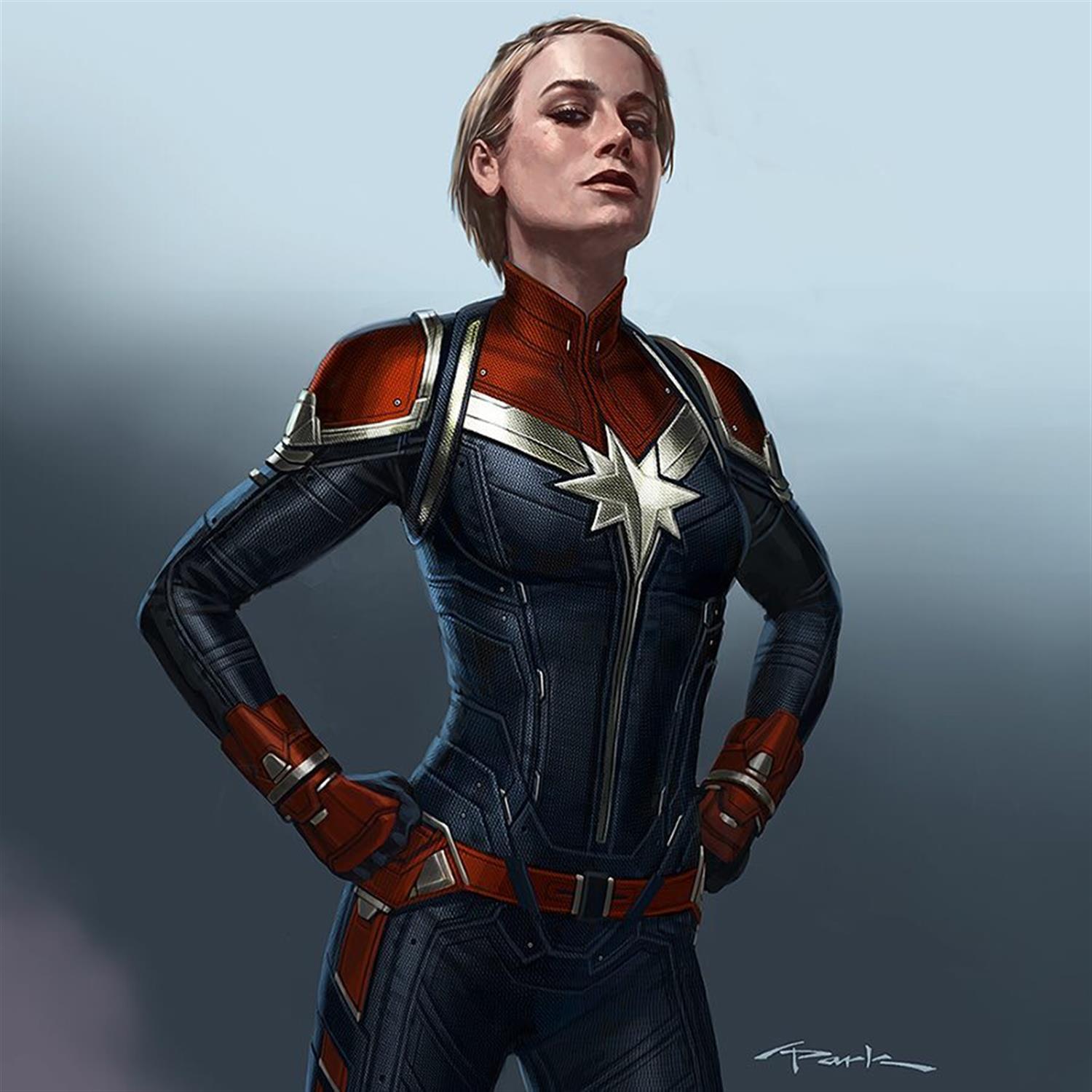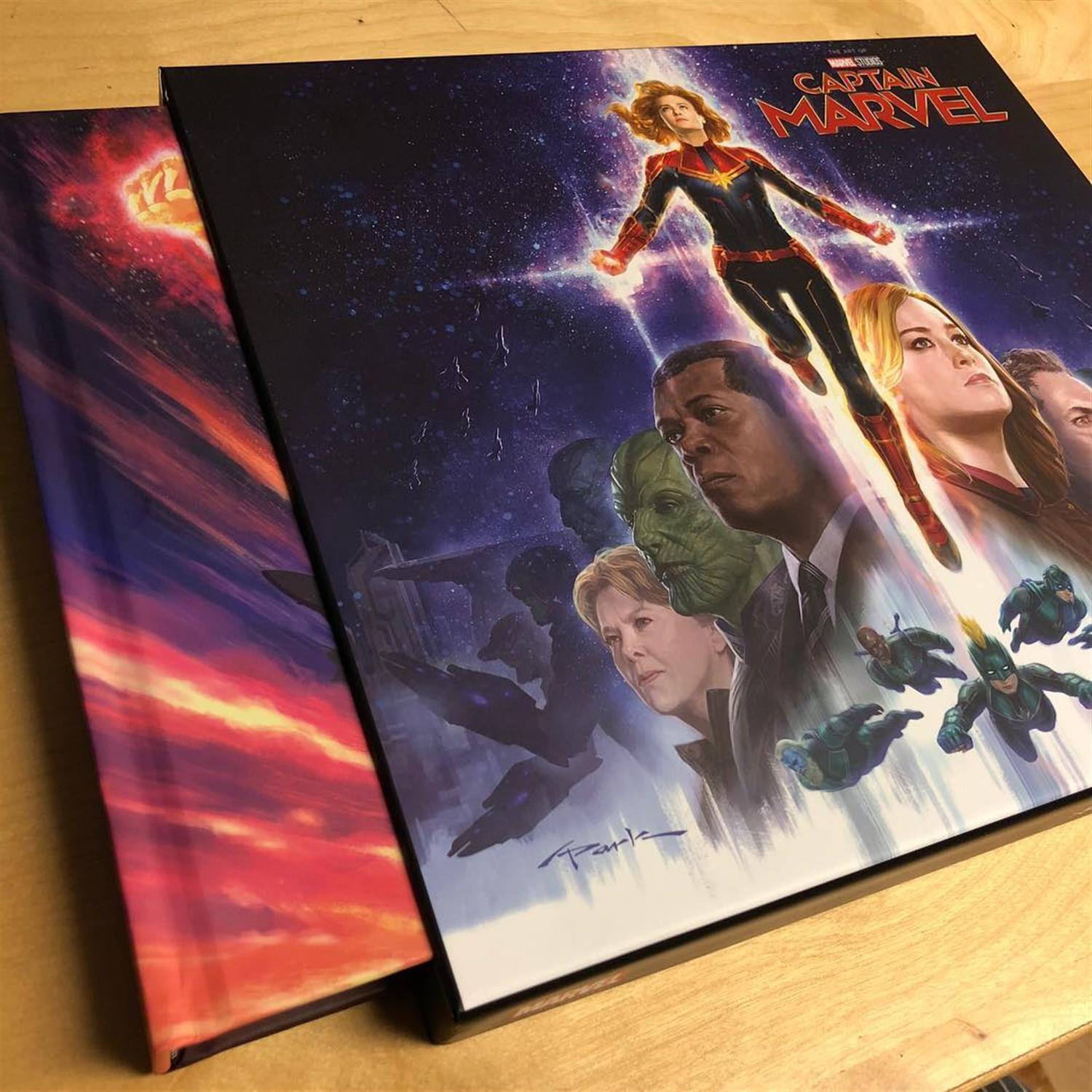A genre movie is only as good as the design that goes into it. That’s why informative books like The Art of Captain Marvel are essential in relaying the sheer amount of work necessary in putting a massive undertaking like Marvel Studios’ Captain Marvel together.
Last weekend I attended a release panel and book signing event for The Art of Captain Marvel with the movie’s visual development director Andy Park, senior visual development concept artist Jackson Sze, and concept illustrator Ian Joyner (all of whom also collaborated on Black Panther, among other Marvel Studios projects) at Gallery Nucleus in Alhambra, California. Together these three artists conveyed just how involved and laborious it can be to develop the look of Marvel Studios characters and locations.
During their presentations, Park, Sze, and Joyner each commented on a slideshow of their Captain Marvel concept art and character designs, detailing how the development process forced their work to evolve over the film’s lengthy pre-production process. Their talks were so informative and fascinating that it was clear most audience members couldn’t wait to learn more about how the visual design of a movie comes together. Fortunately, our admission tickets included The Art of Captain Marvel hardcover book, which holds a wealth of images and information about the visionary creative talent behind the already-hit movie between its covers.
The book’s foreword by filmmakers Anna Boden and Ryan Fleck (co-directors of Captain Marvel) sets us up for how the work of the film’s behind-the-scenes artists helped carry the comic book legacy of the Carol Danvers character forward for a new generation and up onto the big screen. We’re then treated to page after page of breathtaking concept art depicting the Kree homeworld of Hala and its megalopolis central city, before being introduced to early versions of Vers herself, as eventually played by Brie Larson in the finished film.
Other characters’ design evolutions expanded upon in this 340-page tome are Jude Law’s Yon-Rogg, the Starforce team of Att-Lass, Bron-Char, Minn-Erva, and Korath, plus Ronan the Accuser, the Kree Supreme Intelligence, a young Nick Fury, Agent of S.H.I.E.L.D., and those shapeshifting green-skinned Skrulls. We also get valuable insight into the development of the Helion starship, the bleak planet Torfa, the Project Pegasus Quadjet, and Captain Marvel’s climactic “binary” mode.
Ultimately, The Art of Captain Marvel proves itself to be an indispensable resource for anyone looking to inform themselves on the many steps by which the look of a Marvel Studios movie is designed from the bottom up. By flipping through these pages and admiring this thorough collection of artwork, one can’t help but admire the craft and dedication on display. It’s clear that the powers that be behind the Marvel Cinematic Universe are committed wholeheartedly to delivering a top-tier product, undeniably staying true to the traditions of quality established over the past five decades in Marvel Comics.
The Art of Captain Marvel is available now wherever books are sold.

